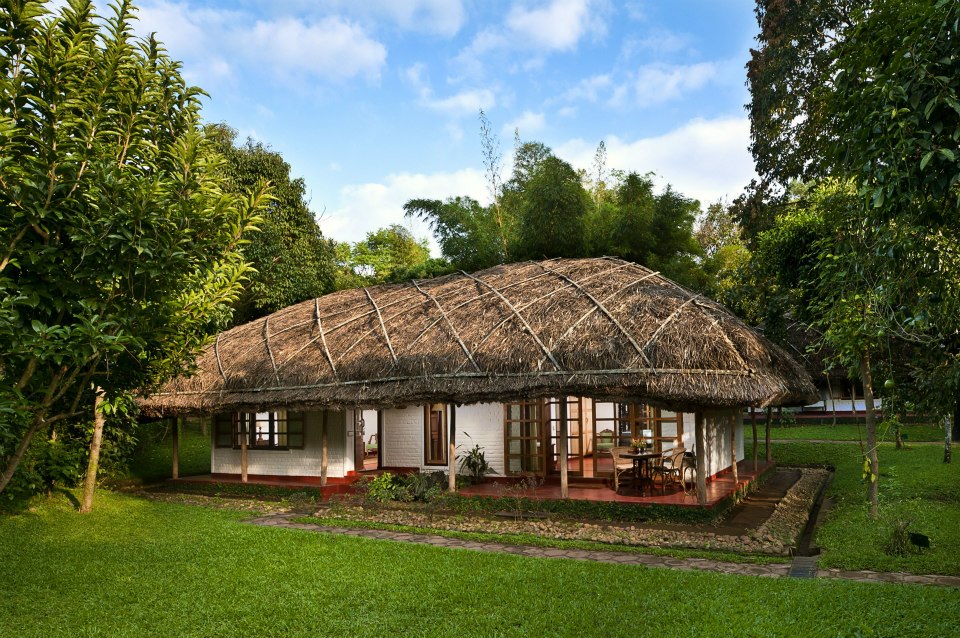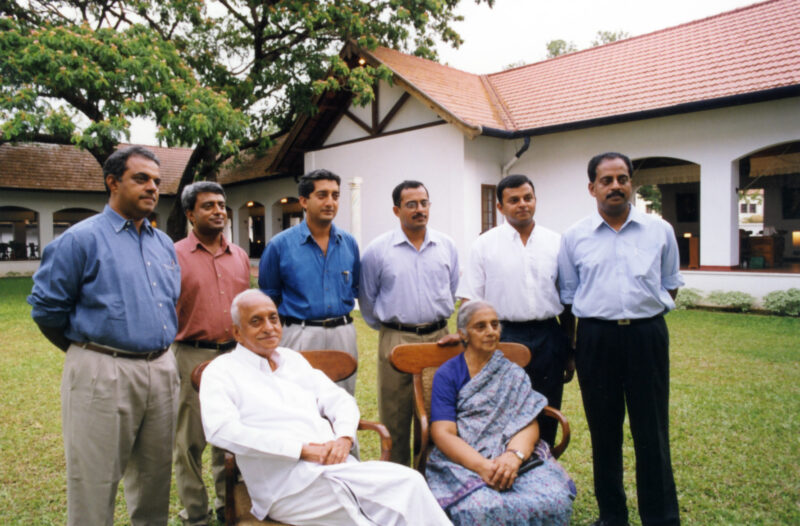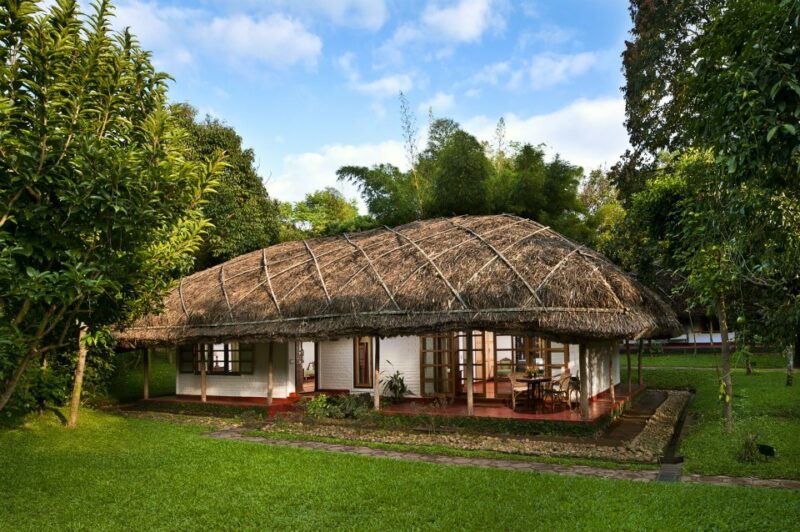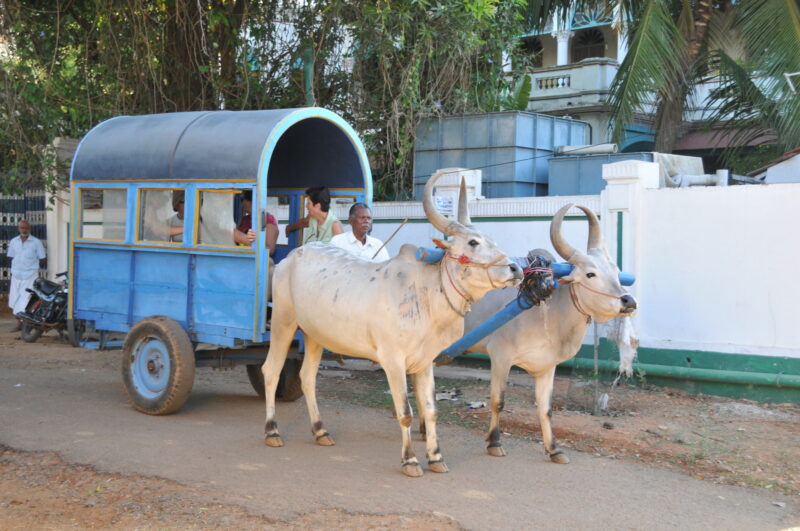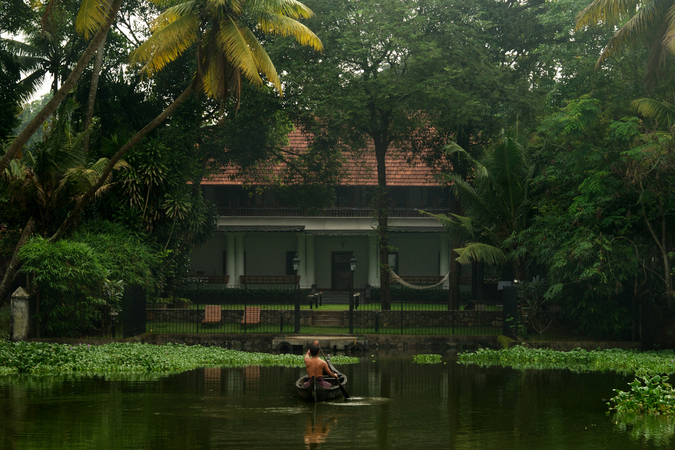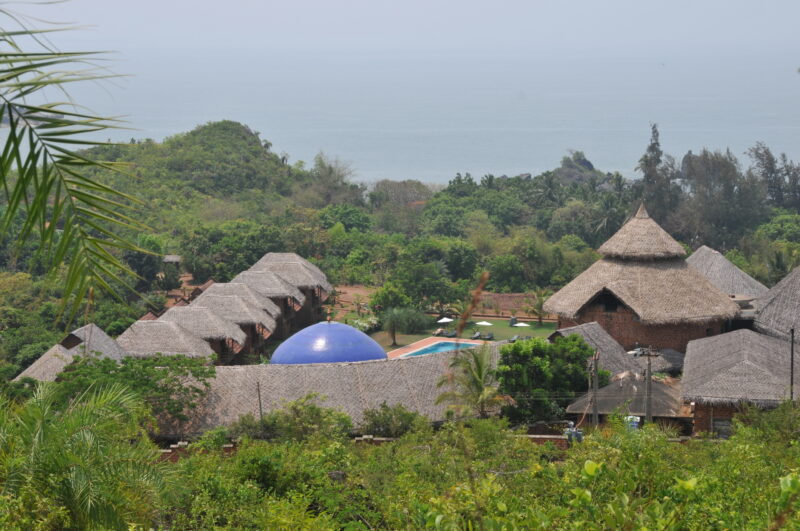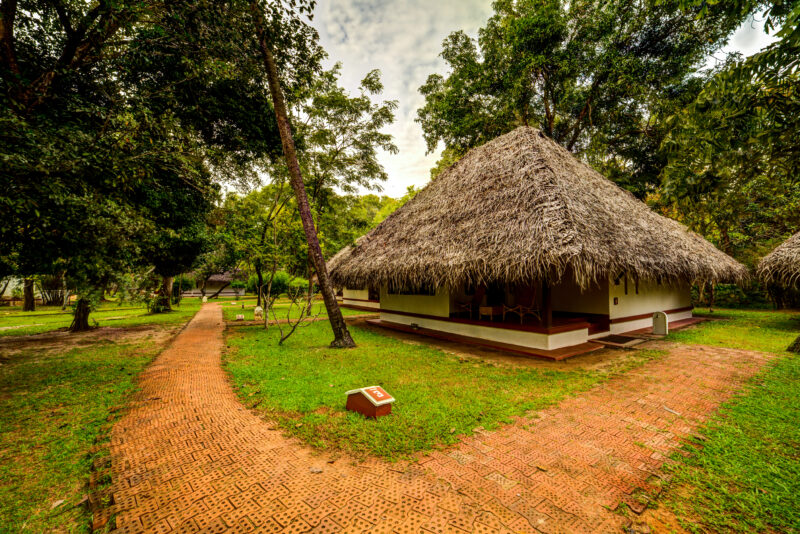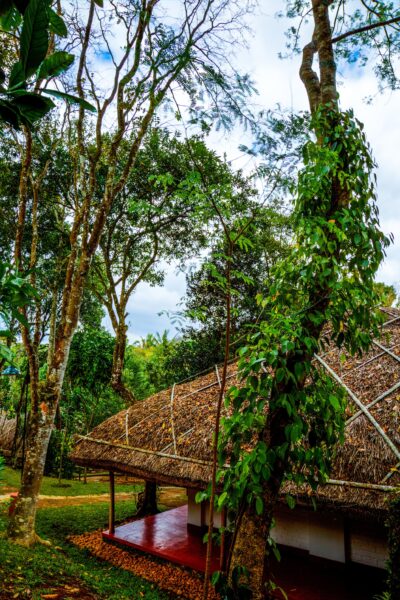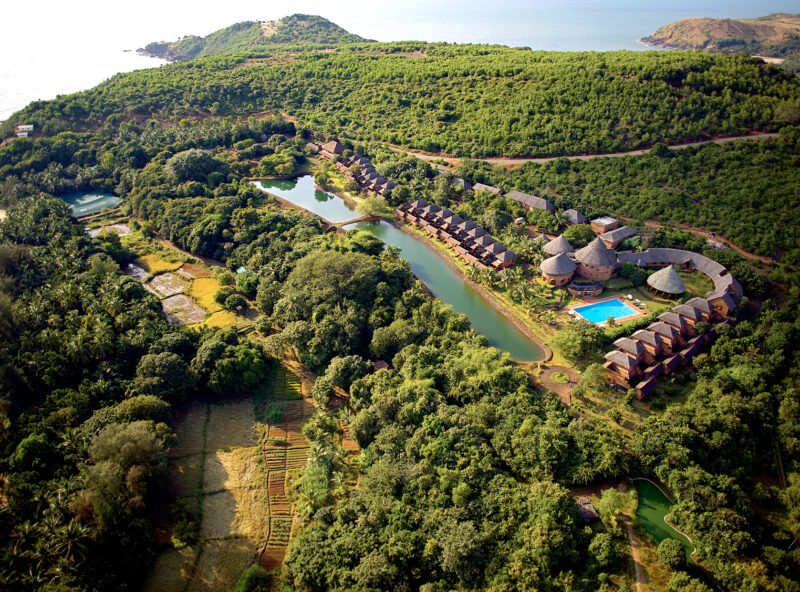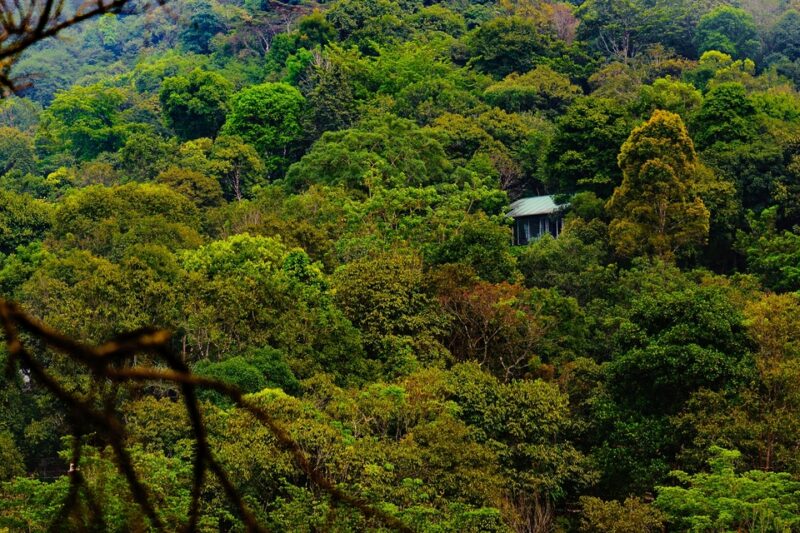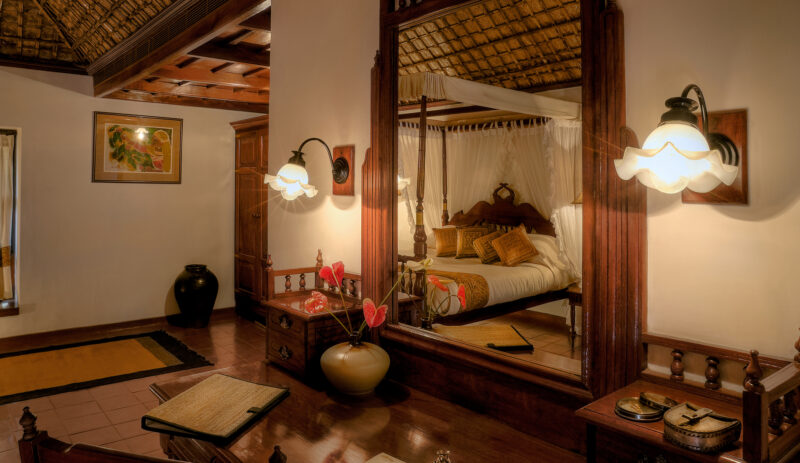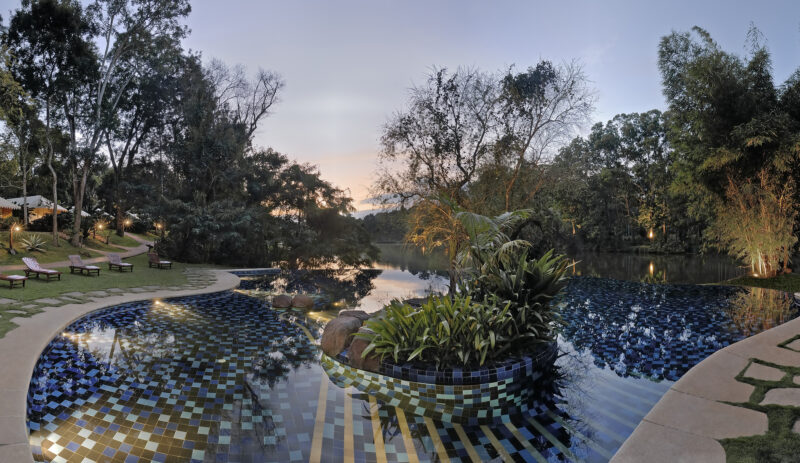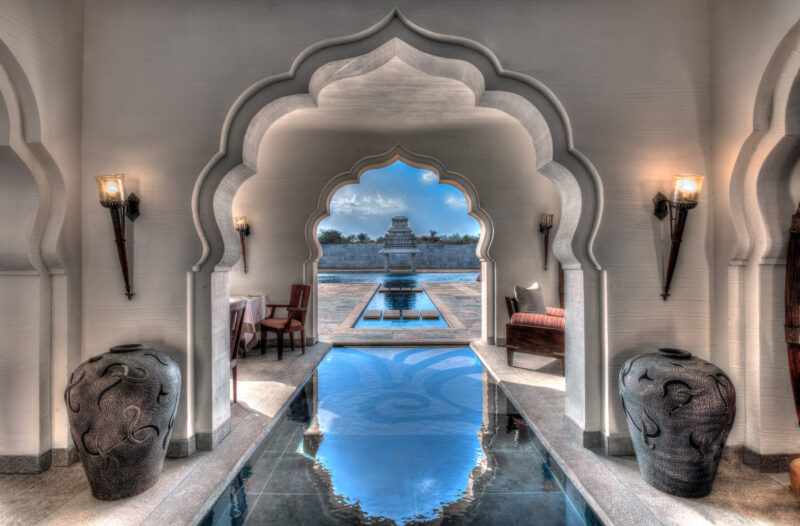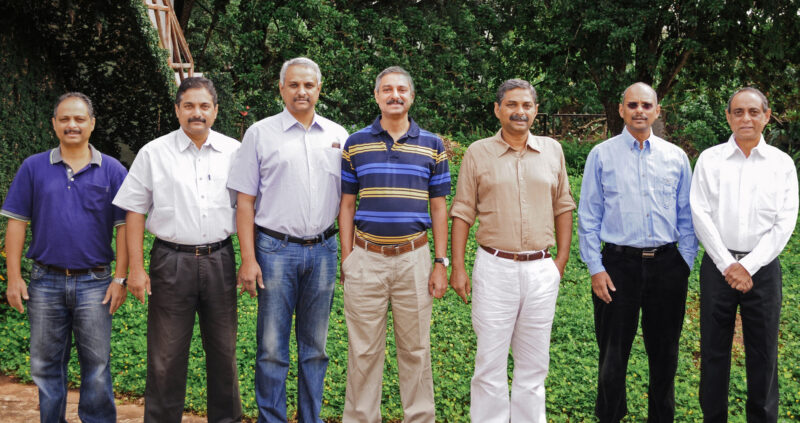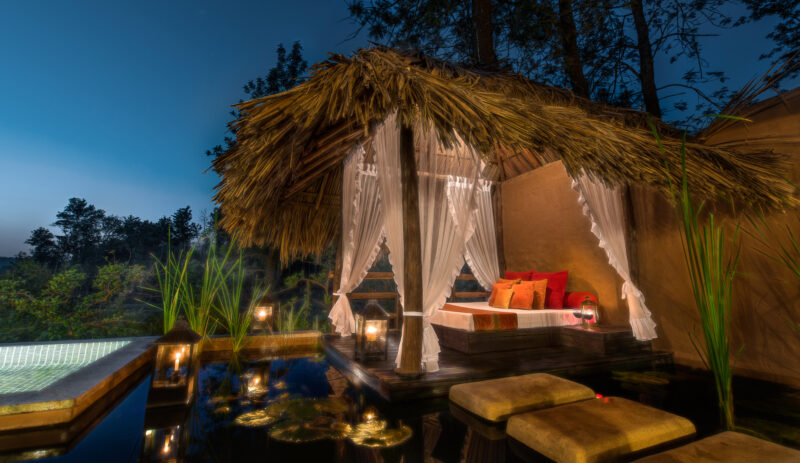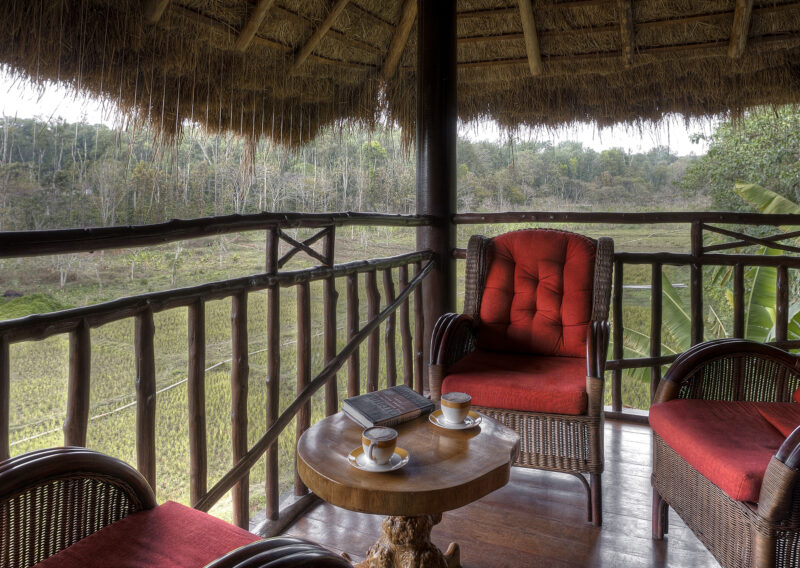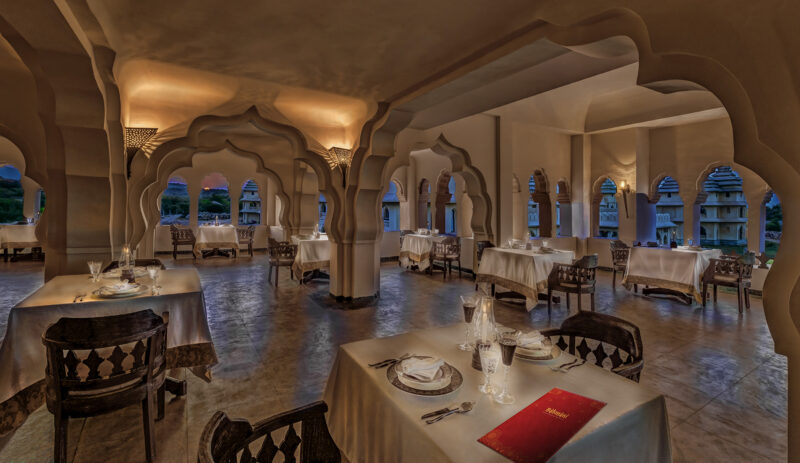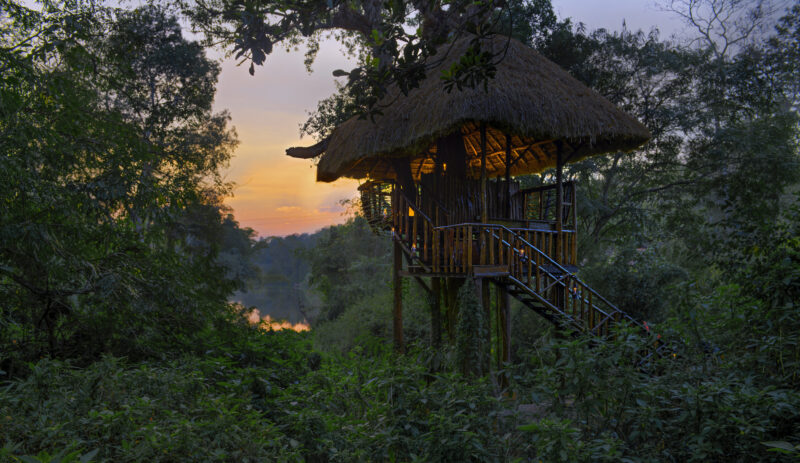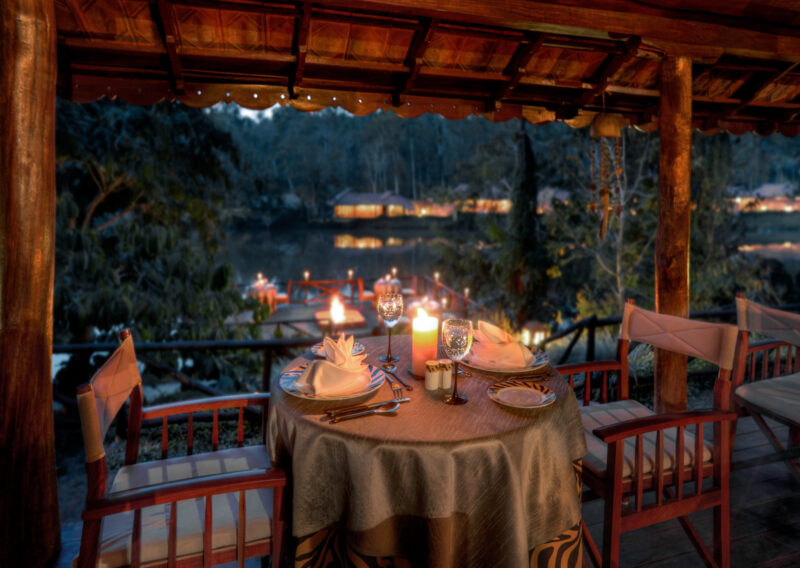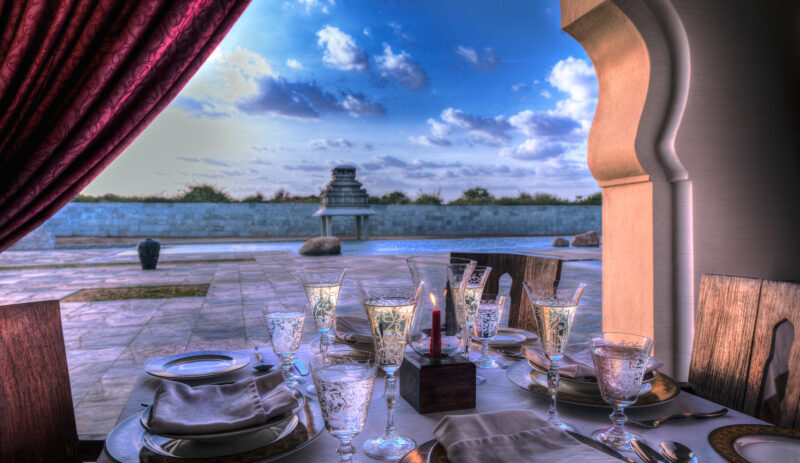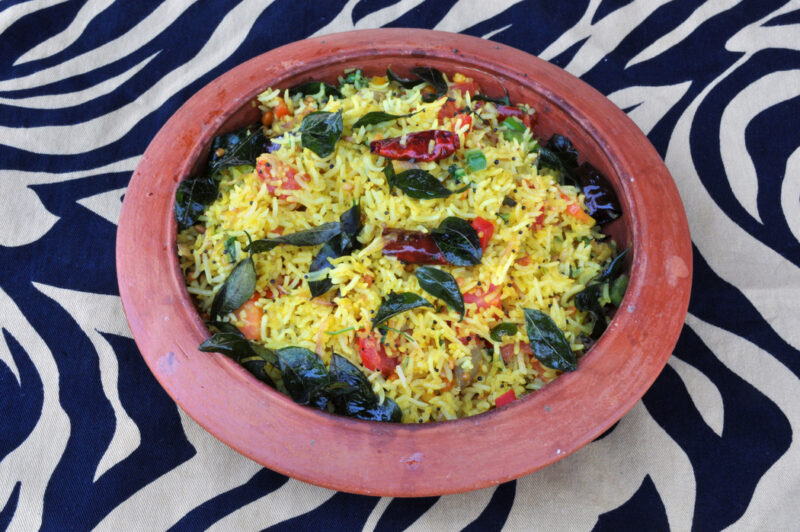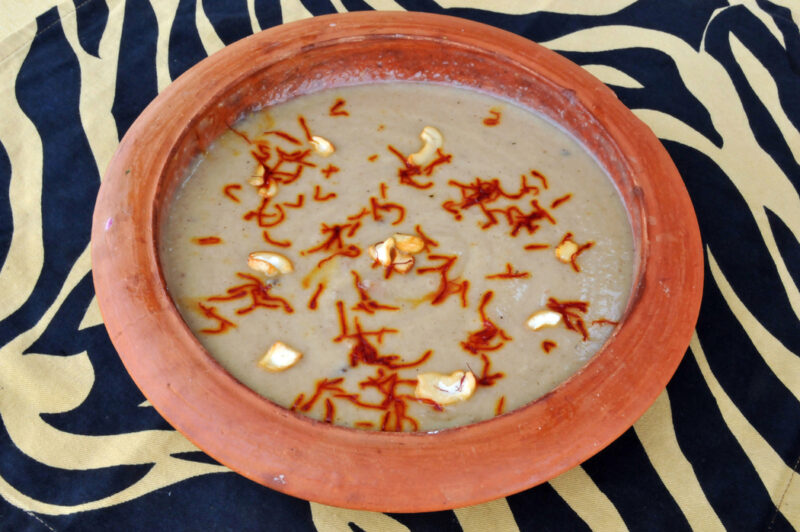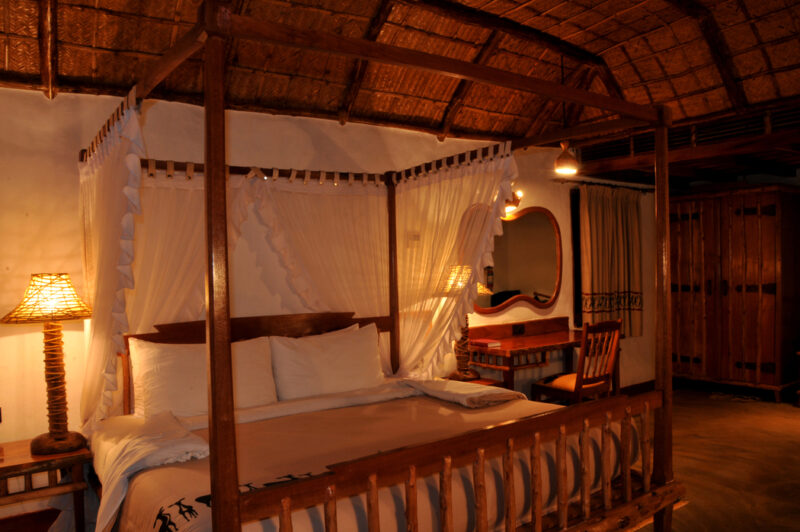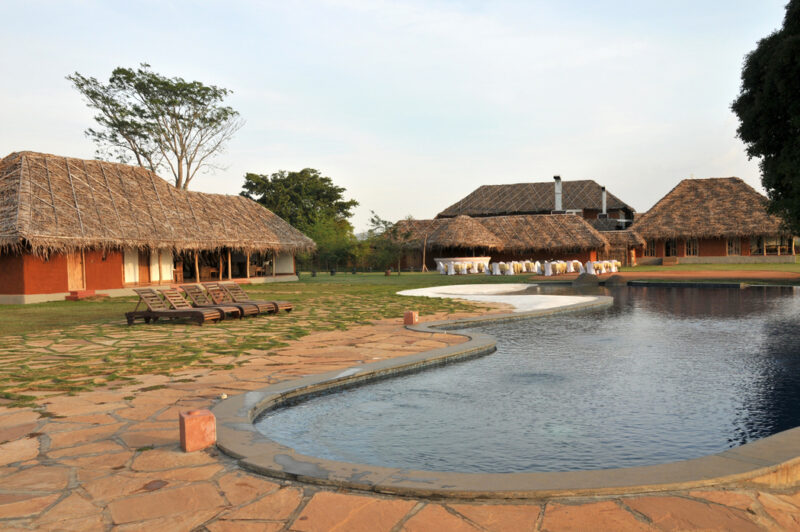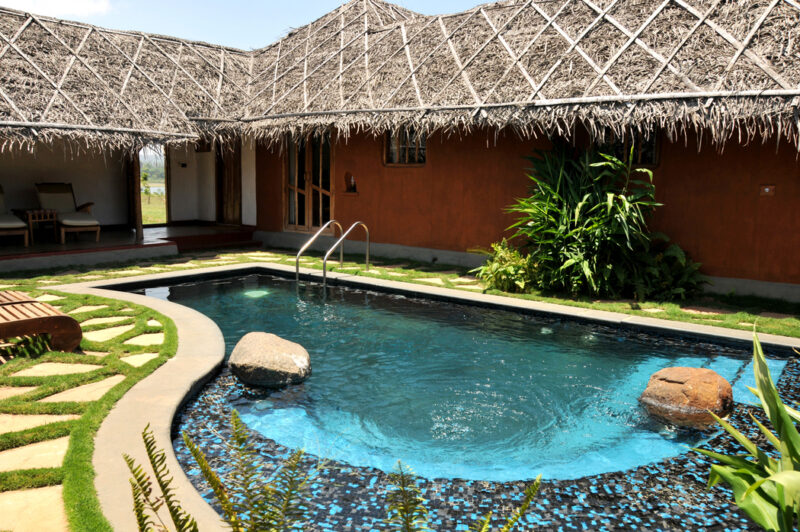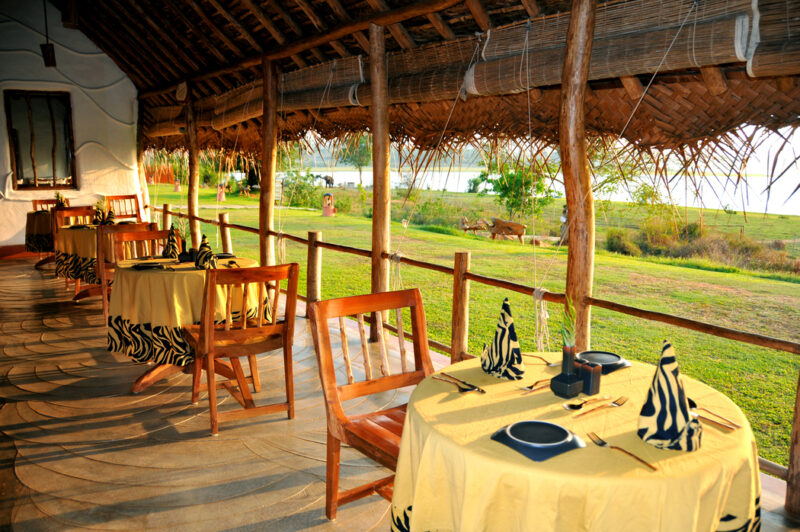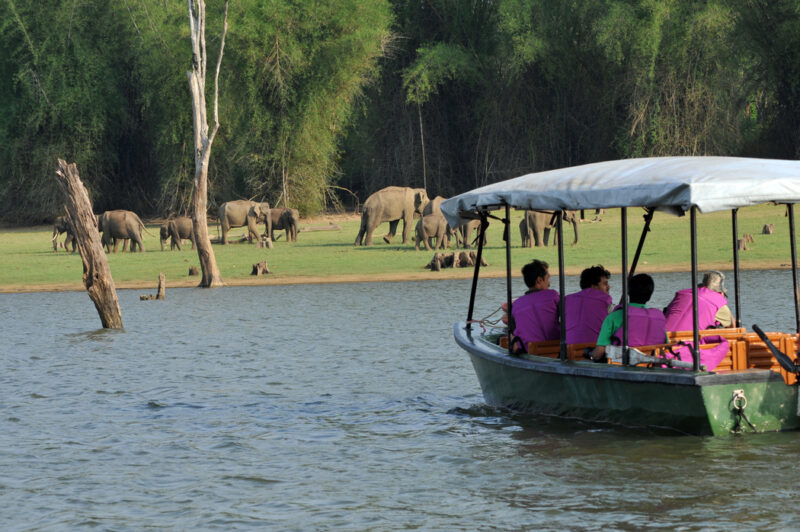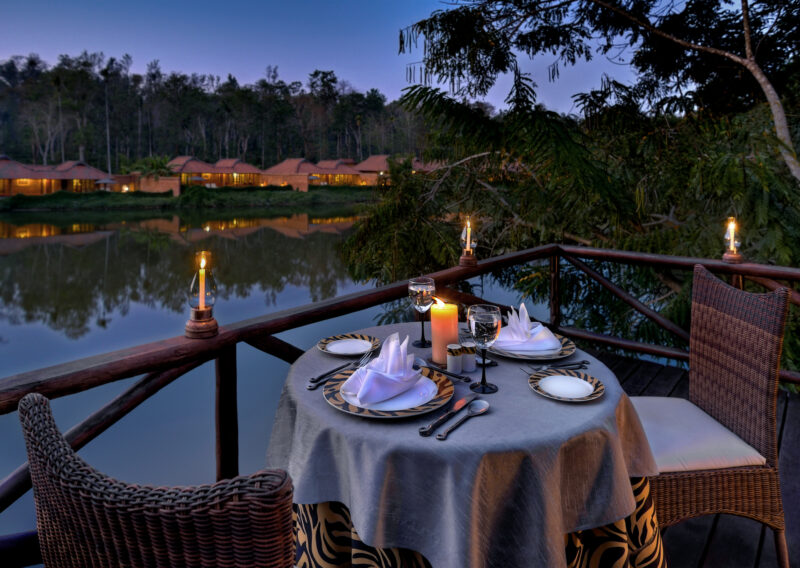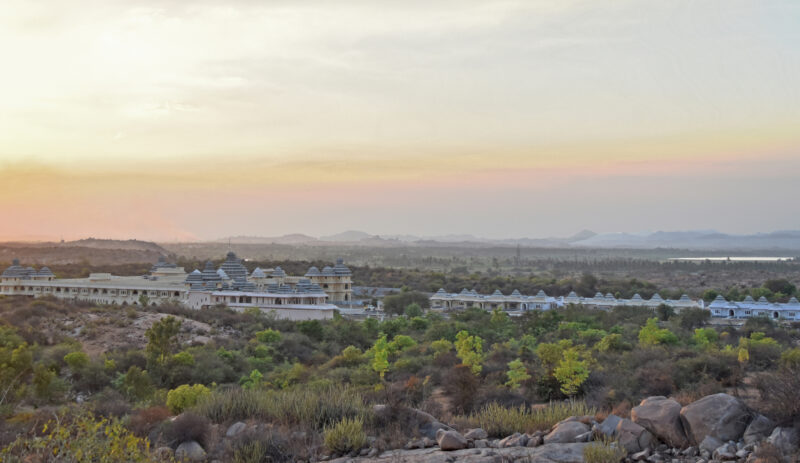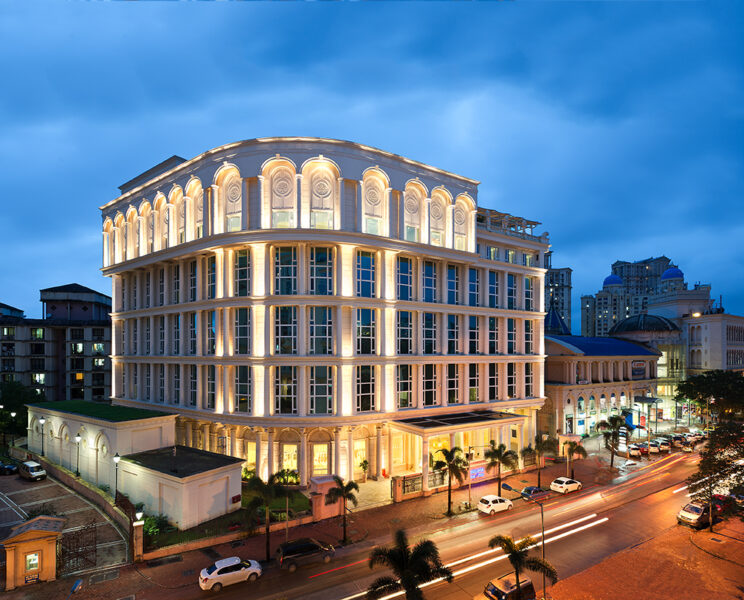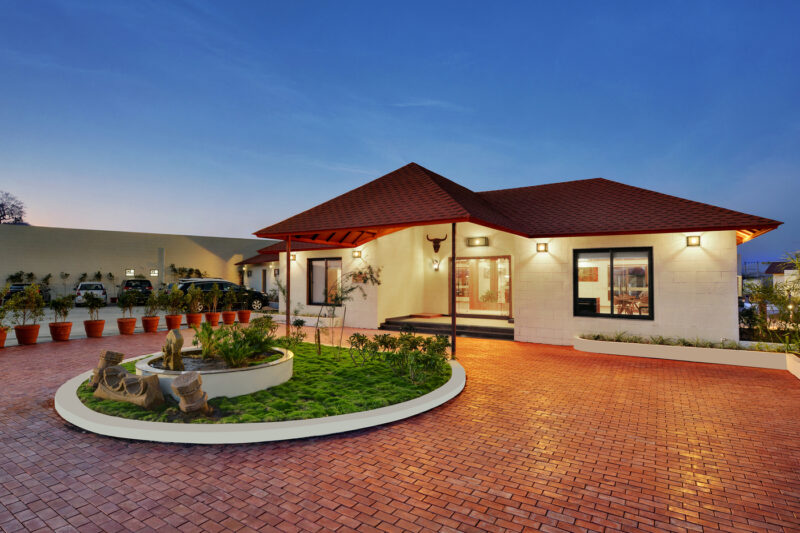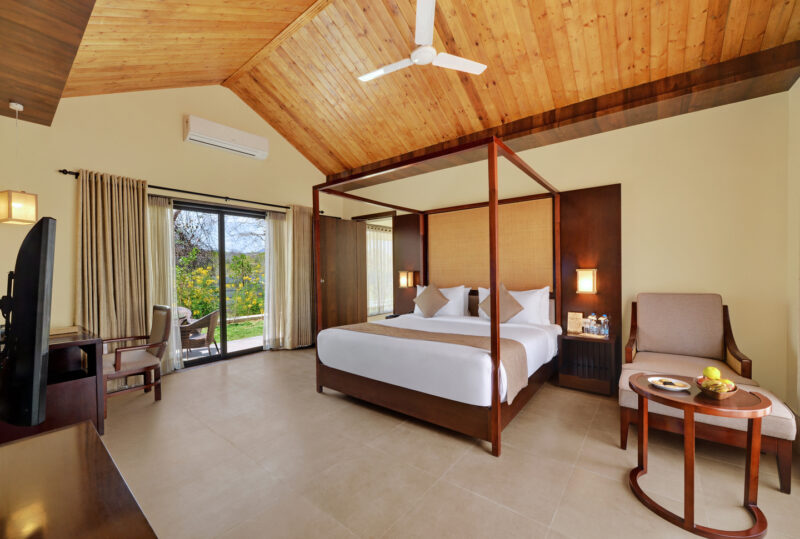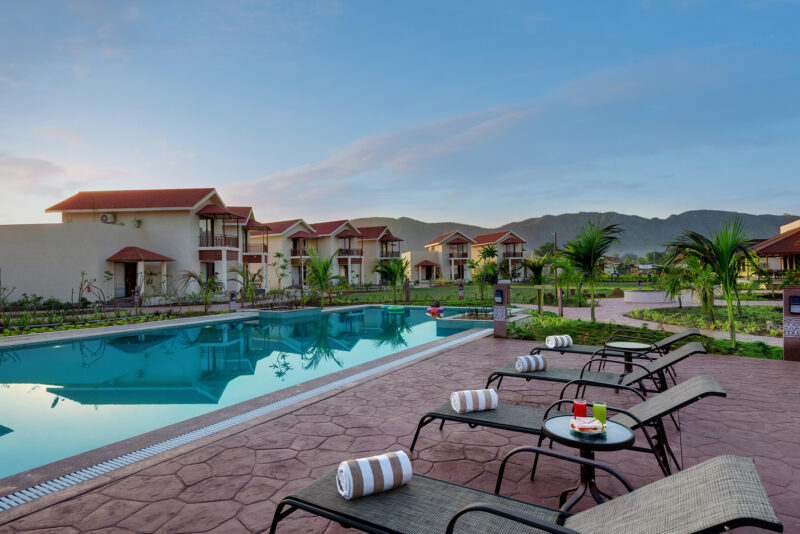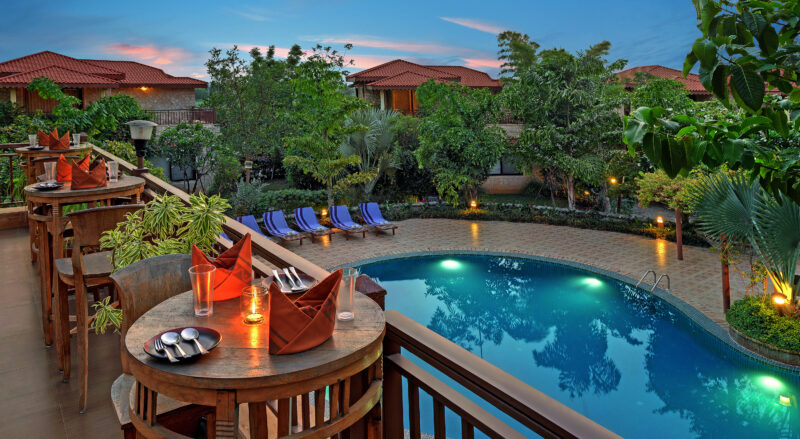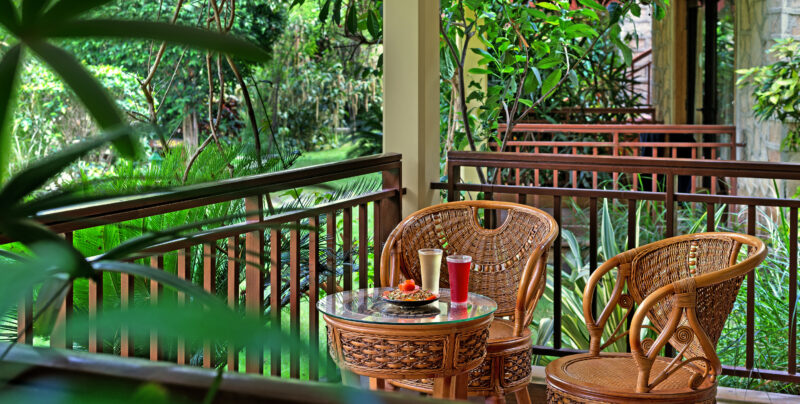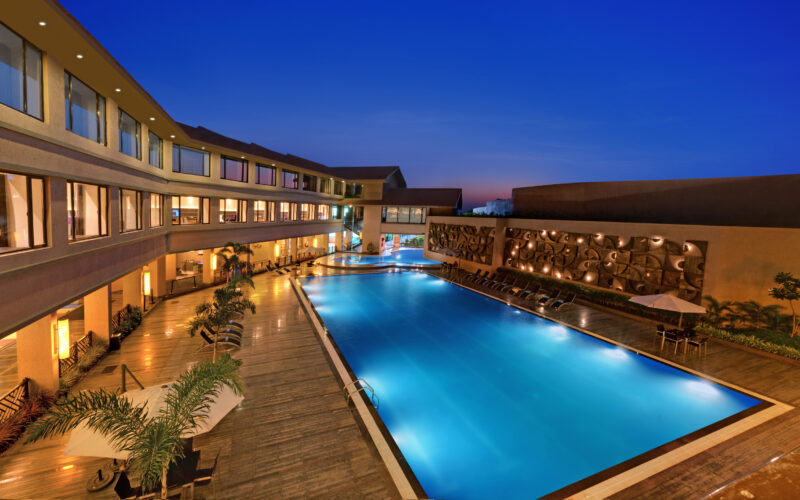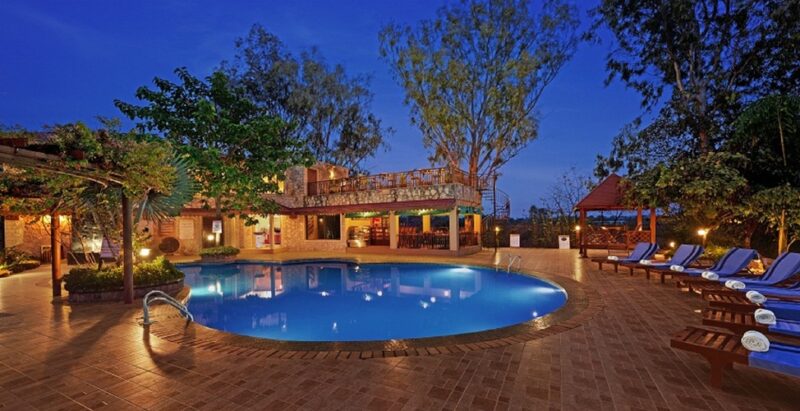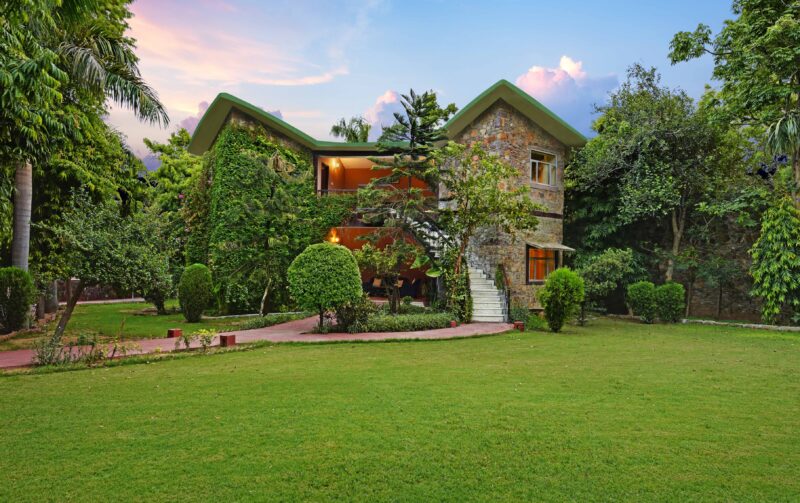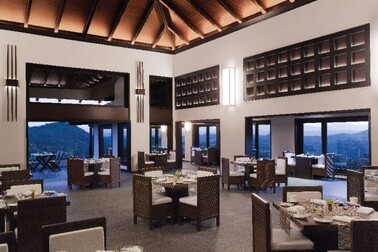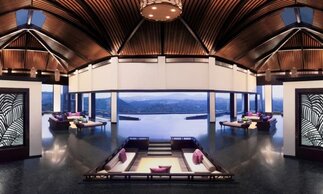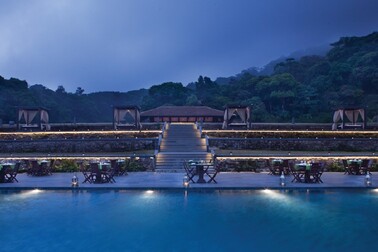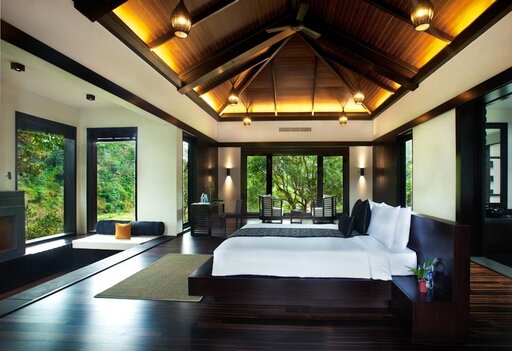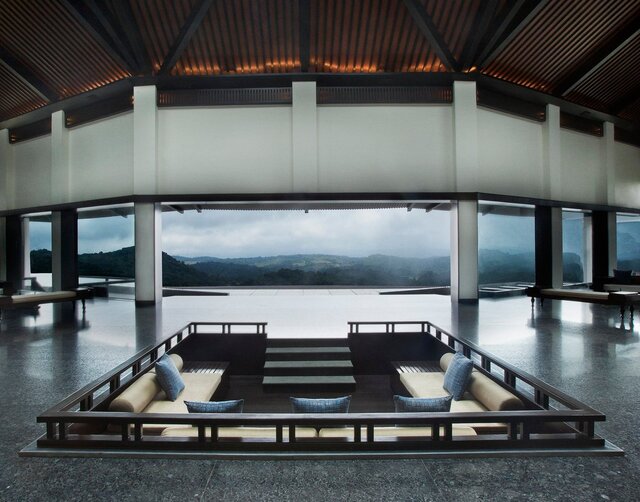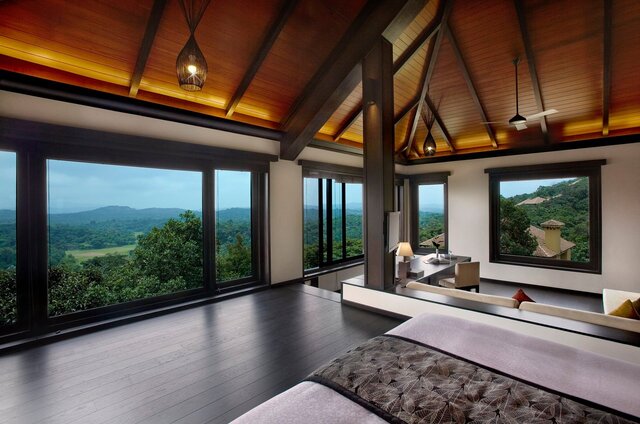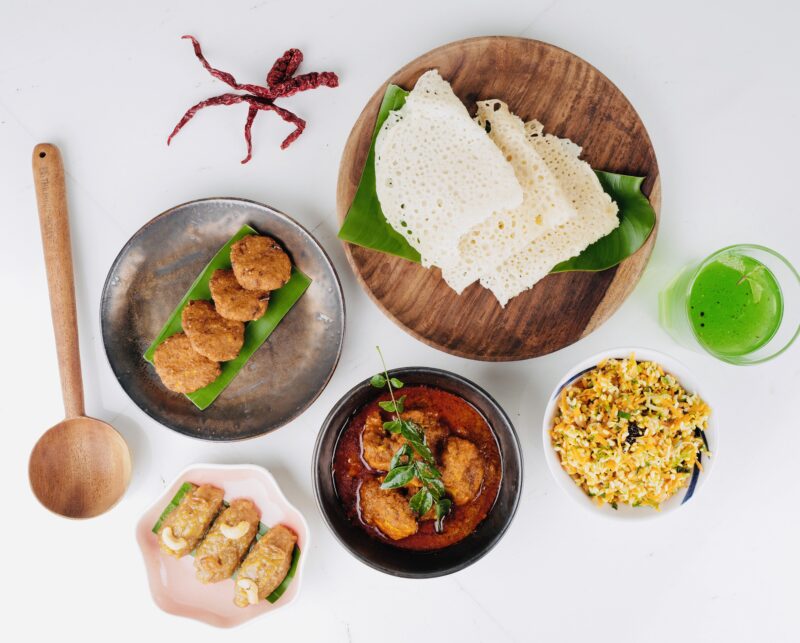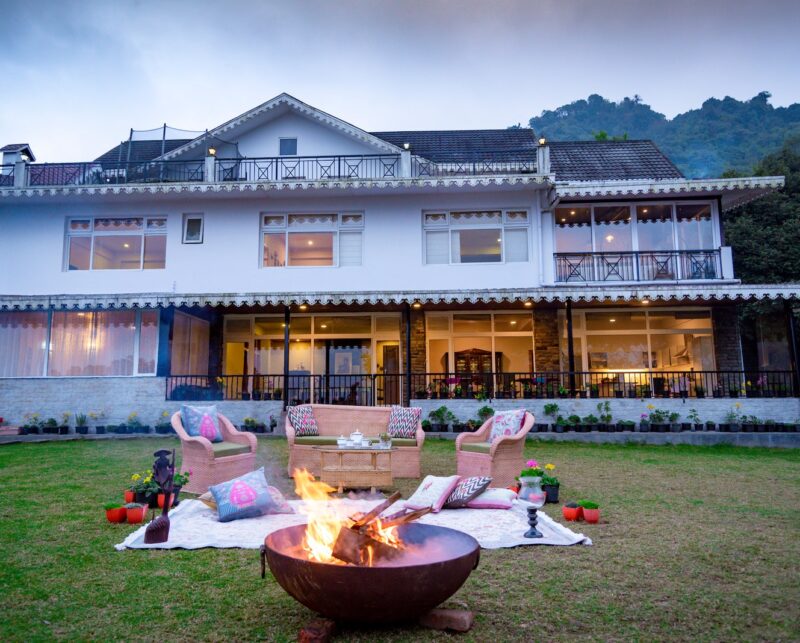THE ECO-HOTELIERS
Anil Mulchandani
Photos – Dinesh Shukla and respective properties.
In a world that is growing more and more conscious about eco-friendliness, sustainable development, social responsibility and climate change mitigation and adaptation, the tourism and hospitality industry is also responding to the challenge of incorporating environment-sensitivity in their design and operations. Some hotel chains as part of their SOPs design their properties respecting the environment and the surroundings, implement efficient lighting and water installation systems, generate part of their own energy, using organic materials where possible, and help the community by going local in their purchases. FEA talks to the promoters of three hotel and resort chains that have made environment-sensitive practices part of their DNA.
CGH EARTH –Clean, Green and Healthy Hotels and Resorts
Following the visit of the late Rajiv Gandhi, when he was the Prime Minister of India, to Lakshadweep it was decided to allow a private resort to develop on one of the islands. Many big corporate giants bid for taking over Bangaram Island that was offered for private tourism development. In a classic David vs Goliath kind of story, the bid was won by the Dominic family that owned a small independent hotel in Kochi. Michael Dominic smiles, “ The opportunity presented by Bangaram Island was a challenge. The differentiator of our bid was that we assured the government that we would have the place up and running in three months, in time for an airport to be inaugurated on the islands’’.
The resort was built using local materials – thatch roofs and indigenous building traditions that made it look like a local village. Says Dominic, “we made the lack of modern luxuries like no air-conditioning, no phones and no TV into an advantage by appropriately positioning the property as that kind of retreat where you could get away from the madding urban life but just get the basic contemporary comforts like clean beds and modern baths. We brought in concepts like carrying capacity, conservation of water and reduced noise levels, only wind and muscle powered low-noise non-polluting water sports, no fishing in the lagoon but only in deep sea, and
other measures. We made these our USP, not projected as restrictions. You paid for what you experienced not for luxuries provided.’’
Thus was born the idea of Experience Hotels, the tagline of CGH Earth Hotels and Resorts – CGH stands for both Casino Group Hotels and Clean Green Healthy Earth-friendly hospitality. “Being planters we respect the land. The family’s basic concept was respect for the land and all creatures that live on it. This when adding any feature to the hotel, we ask ourselves these questions: Is it sustainable? Does the community profit from it? Does it engage visitors and offer them a unique experience? Is it regional? Only if one of these criteria is met do we bring in the new idea’’, says Dominic.
The CGH Earth journey, inspired by their Bangaram experience, began with Spice Village which opened in 1991 with cottages set among spice and organic vegetable gardens. Keeping with the location near Periyar Tiger Reserve and Mannan tribal villages, the cottages are thatched with elephant grass – locally grown tall grasses that are otherwise burnt by the forest officials to prevent forest fire. The interiors are comfortable and luxurious in an understated manner, the furniture is made from wood recovered by recycling old wooden crates bought from the ports, the floor coverings are coir mats, and the notepads in the room are made from paper handmade from kitchen waste, old fabrics and waste paper. The resort menu features local specialties made using ingredients sourced from within a 50-mile radius of the property. Solar power accounts for much of the energy needs of the resort.
Soon after starting Spice Village, Dominic started working on promoting the backwaters, first by collaborating with Babu Varghese who pioneered the backwater houseboat concept by modified rice boats (kettuvallams) to start cruises on the waterways of Kerala, then by starting Coconut Lagoon at Kumarakom. “Old wooden Keralan homes were being sold for timber, and we instead bought the facades, moved them to the island and assembled them to make cottages. The backwaters experience of Coconut Lagoon and the cool climes of Spice Village became an excellent combination tour for tourists from Gujarat and other states of India, whereas earlier it was mainly foreigners who came to Kerala’’, says Dominic, “we then continued our journey deeper into Kerala’s heritage. Marari Beach Resort celebrated the culture of the fishing people and coir weavers of Mararikulam village, Brunton Boatyard by the waterfront encompassed the history of Fort Kochi with its Portuguese, Dutch, British and local experiences’’.
The success story of Kerala was repeated elsewhere. SwaSwara at Gokarna in Karnataka has thatch that is regularly maintained giving local employment, and relies entirely on harvested rainwater. Visalam is a painstakingly restored Chettiar house in Chettinad region of Tamil Nadu,
which has been renovated using the artisanal skills of weavers, carvers and carpenters of the region. In the temple town of Kumbakonam, Mantra Koodam is designed like an ‘agraharam’ – the characteristically Brahmin street lined with houses called ‘illams’ with large verandahs, Athangudi tiles on the floor, ornate Burmese teak doors and open-to-air bathrooms.. Their hotels in Puducherry are also in keeping with the French heritage of the region.
Says Dominic, “we will soon be moving out of the South Indian states to other parts of India, and we will keep adhering to our spirit of regional experiences’’.
EVOLVE BACK RESORT S – The Spirit of the Land
Like the Dominic family of CGH Earth, the Ramapuram family of Evolve Back are also planters, growing coffee, rubber, pepper, cashew and myriad crops. “About 100 years ago, we moved from Kerala to Karnataka where we have a plantation in Coorg or Kodagu district’’, says Jose Ramapuram. In 1994, the family decided to start a resort at their estate in Chikkana Halli of Kodagu District, which has a scenic location by the Kaveri. By 2007, Orange County Kabini became operational at a splendidly scenic location by the Kabini River.
This resort took inspiration from the houses of the Kuruba tribes of the region in its architectural style. Strung out along the Kabini River (a tributary of the Kaveri), the resort looks like a tribal village with its mud-plastered wall, traditional entrance and the thatched roofs of the low-rise buildings inside. Each cottage is an independent bedroom with a sumptuous four-poster bed, comfortable settees and chairs, huge windows looking out at the green surroundings, and modern amenities including an excellent attached bath. However, here too the owners have given touches like mud plastered floors and walls, bottle-gourd lamp shades and an exposed thatched ceiling. The dining area, reading area, lounges and other facility areas have panoramic views of the Kabini River with the forested hills of Nagarhole National Park on the opposite bank. The resort has cleverly been planted with indigenous plants and grasses so that it looks contiguous with the aquatic grass covered shores of the Kabini River. The swimming pool, one of the resort’s highlights, has an infinity edge – while swimming you feel like you are part of the river landscape.
After the success of Kabini Orange County, the Ramapuram families began work on the next resort at Hampi. “We had rapidly begun to realise that as we were growing into a chain, the name Orange Country did bottles in the resort, and instead water is pumped from a reverse osmosis plant to each cottage.We sewage water and organic solid waste for gardening, foam flow faucets to reduce waterconsumptionOther environment-friendly principles include reduced noise and light levels,keeping in mind the location outside a wildlife reserve at Kabini’’, he explains, “however, wehave to be thinking all the time on how to implement the best practises. At Hampi, the resorttakes inspiration from the Vijaynagara Empire that ruled this region in medieval times. Thegrandeur of the Vijayanagara empire is captured by the architecture and interiors of the resort.Here, we could install solar panels on the roof. But at Kabini, we could not because all the structures had thatched roof, so we installed the solar energy plant in the parking area to provide much of our energy needs. The jute slippers usually used at resorts are not as eco-friendly as they look, while the jute is biodegradable the other layers have rubber and other non-compostable materials. So we now provide each room with rubber slippers that the guest can use and then carry back with them or they can be reused’’. They also have responsible hiring practises that gives priority to recruiting locally. “At Kodagu, we have adopted the local government school, besides launching our own state-of-the-art pre-school’’, he says proudly.
Ramapuram says that each of the responsible practises do pay back. “After the initial efforts, time and capital costs of implementing the practises, we do find that there is much to gain from being sustainable. For example, when it comes to reduced energy costs by using energy-efficient appliances and renewable energy’’, he states, “a growing number of travellers also enjoy guilt- free trips. We find that the experiences we offer, the story-telling we do and the environment- friendly and socially-responsible initiatives that we take ensures repeat visitors and huge word- of-mouth publicity. Thus, we rebranded our properties to Evolve Back in 2017, as we always yearn for the days when we had cleaner air, cleaner food and cleaner water’’. After the hills of Coorg, the wildlife reserve of Nagarhole and the UNESCO World Heritage Site of Hampi, the coastal location of Karwar will soon see their fourth resort in Karnataka.
While they have focussed on Karnataka till now, Evolve Back will soon start operations at a private game reserve in Botswana spread over 110 sq km. “We have also acquired land at Mandu in the Malwa Plateau and Bhutan in the East Himalaya, where also we will follow the principles of bringing in the Spirit of the Land’’, Ramapuram concludes, adding, “Whether it is Africa, Bhutan or Malwa, Evolve Back is committed to its ethos – eco-sensitivity, straight-from- the-heart, constant innovation, elegance, attention to detail, going the extra mile, a reflection of local culture and regional architecture’’.
FERN HOTELS & RESORTS – Leading environmentally sensitive hotels
While a number of big hotel brands are increasing their focus on sustainability, Fern Hotels is the Indian hotel chain that has made its environment-friendly practises part of its USP through its tagline, Leading Environmentally Sensitive Hotels. Says Suhail Kannampilly, CEO of Concept Hospitality, “our family strongly believes in the importance of environment-friendliness. My father had worked on eco-hotels in the past. Besides these while brainstorming on what would be our differentiator vis-à-vis other chains in India, we realised that while other chains were known for luxury, food or rooms none had cashed in on the growing awareness about environment and social consciousness’’.
He says they had thought of different names earlier but found some of them had already been used by international hotels. “Then came the name, Fern. It was the first plant that existed on earth thus goes with our environment friendly image and at the same time from a marketing viewpoint it is a two-syllable name with easy recall.” Ferns have been the subject of research for their ability to remove some chemical pollutants from the atmosphere. With its concept of going green, Fern moved away from the cookie-cutter model of most hotel chains to come up with a clutter-breaking strategy based on eco-commitments. “Fortunately, as Concept Hospitality which was our hospitality consultancy company moved to set up its home-grown chain of Fern Hotels, our asset owners trusted us and agreed that we could
incorporate our environment-conscious concepts in the properties they owned. We started with Jaipur, Ahmedabad, Delhi and Gir, each owner was with us in our concept. Then came, Meluha- The Fern in Mumbai with a LEED Gold- New Building (Leadership in Energy and Environment Design) certificate with high efficiency heating and cooling system, cool roof system, energy
efficient lighting, rain water harvesting systems, low-flow taps and flushes, waste management practices and reduce-reuse-recycle measures. Meluha-The Fern is highly tanked for the total water reuse rate since recycled water is used for flushing, cooling towers, irrigation, etc’’, says
Suhail, adding, “the younger generation of travellers like to know they are staying in a property that is environmentally-sensitive and socially responsible. Over the last decade we have grown to 80 hotels at 65 locations with more than 4600 rooms without losing sight of our
commitments’’.
Maintaining standards for chain-branded hotels operated through a franchise or management agreement poses its own challenges – each asset owner is different and every location has different issues that need to be considered. “We have solved this by investing in our human
resources. We are driven towards creating responsible environment stewards through interactive training modules, innovative team building activities, and community events. Thus, the Green Team in each hotel is vested with power and responsibility, the team can even override the GM for any decisions that affect our brand’s environment-sensitive positioning: all the contemporary facilities packaged together with minimal impact on the environment,’’ he says, “the Green Button is one of Fern’s signature initiatives. The guest can press the button on the bedside panel to ensure lower power consumption’’. The Fern Hotels and Resorts, India’s leading environmentally sensitive hotel chain in association with National Geographic Traveller India and Aabid Surti (Drop Dead Foundation) have started an initiative ‘Fern Saves Water’ where they will engage with the locality to ensure reduced water usage.
As the Fern brand expands, Kannampilly says they will stay rooted to their tagline. “The eco-hotel supports the conservation of theenvironment, motivates employees that experience pride at work, enhances customer loyalty, builds stronger relationships with communities and regulatory
bodies, gives us a trusted brand image, and reduces energy bills. The strategy has therefore worked well for us’’.
BOX
MYRIAD WAYS OF THINKING GREEN
A growing number of luxurious hotels and resorts have incorporated sustainability features of different kinds. We look at a few of these properties where eco-sensitivity does not meanncompromising on luxury.
-
THE ORCHID : AN ECOTEL PIONEER
Dr. Vithal Venkatesh Kamat, a hotelier, restaurateur and environmentalist, promoted India’s first certified Ecotel, The Orchid in Mumbai. Construction materials used at The Orchid have a high proportion of recycled content. This hotel has taken multiple measures for waste management, water management, energy-efficient design, low energy use systems, and training of the staff to implement eco-sensitive practises. When you stay at the Orchid, you get biodegradable herbal products and stationery made from environment friendly material in your rooms, use hangers made from sawdust, slippers from reed/cloth, folders from jute, wood saver pencils, laundry baskets from cane, laundry and shopping bags from cloth, etc . Only potted plants are used in the hotel instead of cut flowers. No carbon paper is used in the hotel.
-
PRAGATI: GARDENING FOR SUSTAINABILITY
The winner of the Greenotels’ Gold Award, Pragati Green Meadows & Resorts in Hyderabad is an excellent example of a resort that has greened barren land. An interesting aspect of the garden is the inclusion of mosquito-free plants.
-
ITC LUXURY HOTELS: BIG CAN BE BEAUTIFUL TOO
All ITC Luxury Hotels are rated and certified for LEED (Leadership in Energy and Environmental Design), which makes it one of the
greenest chain-branded luxury hotel groups in the world. In 2012 ITC Grand Chola became the world’s largest LEED Platinum rated hotel in the new construction category while New Delhi’s ITC Maurya is the first hotel in the world to have been awarded Platinum-rating under LEED’s Existing Building program. Standout features range from the design of the ITC Kohenur that is angled to maximise flow of natural sunlight in its interiors, the biogas plant at ITC Maurya and the air quality initiatives at ITC Gardenia to the
water management at ITC Grand Chola.
-
VANA: SUSTAINABLE MATERIALS
Vana is a wellness retreat with a Platinum rating LEED review. Set in sal forests near Dehradun, this property has used sustainable materials where possible, including bamboo flooring, FSC certified wood, and certified organic linen.
-
ALILA DIWA GOA: USE OF BIODEGRABLE ALTERNATIVES
Alila Diwa Goa is known for its use of biodegradable material and working with the landscape to preserve indigenous ecosystems. One of its measures is the use Areca leaf plates and bowls made using naturally fallen palm leaves for outdoor catering events – this also reduces water wastage for washing cutlery and replaces plastic plates with compostable and biodegradable products.
-
RAINTREE HOTEL: BUILDING RESPONSIBLY
The Raintree Hotel at St. Mary’s Road in Chennai is constructed using rubber wood, bamboo and medium density fiber, with Portland Pozzalana cement that contains 15 to 20% of fly ash. Other green features of the hotel include water saving devices, a sewage treatment plant which recycles water and is used for air conditioning, and reuse of heat produced for warming water in the bathrooms.
-
VIVANTA BY TAJ MADIKERI: INGENIOUS USE OF LOCAL MATERIALSM
Vivanta by Taj at Madekeri, Coorg, has an eco-friendly minimalist design wih a focus on sustainable materials. Though it is set in rainforests, All 66 rooms and cottage-style villas, as well as roads, were constructed in tree-free areas using compressed bricks made on-site from displaced soil. The cottages are painted with mud paints made on-site and decorated by native artisans. The roof tiles are handcrafted from recycled tiles from dismantled homes. All furniture was handcrafted on-site. Old recycled wood was used extensively in Spa and other areas. Natural river stones are used throughout property. Great care was taken to preserve 250 species of local flora, and the grounds are home to a strawberry farm.
-
YOGAMAGIC ECO-RETREAT: GOING NATURAL
At Yogamagic in Goa, the accommodations are built from canvas, bamboo, palm leaf thatch and mud, and feature solar powered lighting and natural composting toilets.The more luxurious suites are furnished throughout in khadi silks, colourful saris, natural cottons, bamboo and hemp. The solar showers get their heat directly from the sun. The food is organic and vegan.
-
OBEROI GURGAON: RENEWABLE ENERGY
The Oberoi, Gurgaon and Trident, Gurgaon have introduced solar power to fulfill the electricity needs of both hotels. A captive power plant in Balasar, Haryana will generate 7.5MW of electricity to meet the energy demands of the two hotels.
The solar power plant has been equipped with Polycrystalline technology and is spread over 25 acres. With 27,000 solar panels installed, the plant’s performance ratio is determined to be 76.50%. The Oberoi and the Trident in Gurgaon aim at reducing CO2 emissions by 12,344 tons per year.The restaurants highlight locally grown fruits and vegetables over imported produce.
-
HYATT REGENCY DELHI: REDUCING PLASTIC BOTTLES WASTE
Hotel guests consume millions of bottles of water, resulting in 20 to 30 tonnes of plastic waste annually. Hyatt Regency Delhi is one of the first hotels to have installed a water purification and bottling plant to ensure that guests get their water in glass bottles instead of plastic. The hotel also has e-charging stations for electric cars to encourage guests to shift to green fuelled transportation. It also gets electricity from Green Hydro Power sources.
-
THE SHERATON GRAND CHENNAI: WATER RECYCLING
This superbly designed and attractive hotel has a water recycling treatment system that reuses waste water to maintain its sprawling
gardens.
-
THE TAMARA COORG: TREADING SOFTLY
Though the estate spans 180 acres, only about 3.20acres of this resort land has been constructed to become a resort. The water heater uses coconut husks from the property together with the steam created during the laundry service for purposes like heating water. This property also has comprehensive organic waste management system known as ‘Manthan’ for composting. Water from its plants is used to irrigate plantations.
-
HILTON SHILLIM ESTATE RETREAT: GOING ORGANIC
This property in Pune grows its own organic produce and sources all ingredients locally. The hotel composts waste which is used to grow vegetables for the kitchen.
-
THE DUNE ECO-VILLAGE: ZERO-MILE SOURCING
The Dune has its own farm with cows, compost yard and nursery where crop diversification is undertaken to produce as much vegetables, pulses, rice and fruits needed to supply the Fun Restaurant and the Seafood Bar. The villas of this beach resort at Puducherry have organic linen, a solar water system and low consumption bulbs. The property’s restaurants serve healthy food made using home grown produce.
Appreciating the homeland
All lodgings were constructed in the typical style, built from predominantly regional resources, or from reused materials. Each resort must be benefiting the local communities, acknowledging their local culture and supporting them. Part of it is the deferential contact with their employees who are offered a perspective in the hotels. Given these reasons, CGH Earth recruits and trains local people, strengthens them in being themselves, and thereby creates an authentic atmosphere. Women, in particular, are promoted and also encouraged in taking senior positions.
The Indian consciousness, the Indian soul
Acting responsibly, protecting the environment and respecting the people – CGH Earth calls this the “Indian consciousness”, because it embodies values of the Indian soul – variety, beauty, simplicity and care. These keystones are to be discovered in every experience of the CGH Earth hotels. In the sense of sustainability and the Indian soul, every resort offers various possibilities to do something good to the own soul life. From Marari Beach which is built up like a traditional fishing village, to Coconut Lagoon situated in the canals of a side arm of the Indian ocean, or getting Ayurvedic treatments and doing yoga in the SwaSwara, up to Spice Village in a traditional mountain village surrounded by nature – none of the hotels resembles the other, but the CGH Earth’s identity is always unmistakable.
Three R’s to protect the planet
According to George, “sustainable living is a lifestyle that attempts to reduce an individual’s or society’s use of the earth’s natural resources and personal resources.” Accordingly the CGH Earth resorts are managed following the basic principle of three R’s – Reduce, Reuse, Recycle. In this manner, the hotel group contributes to environmental protection every day: Modern plants help reduce the water consumption and local flowers are planted, because they need less water. Also, power-saving lamps are used.
Moreover, the CGH Earth group tries to abandon fossil fuels as much as possible and increasingly uses fermentation gas or renewable energies. In general, the hotel group reduces the consumption of resources, which is why it chooses suppliers who increasingly renounce plastic packaging, you can find reusable garbage bags, for example, and newspapers are solely displayed in the common rooms. Besides, food leftovers are converted into fermentation gas and used as fertilizer. “Our journey does not end; in fact it has only begun”, George sums up confidently, “I think the Dominic Brothers have a new mission – to take CGH Earth global and open mindsets that will benefit the planet and all that lives on it.


